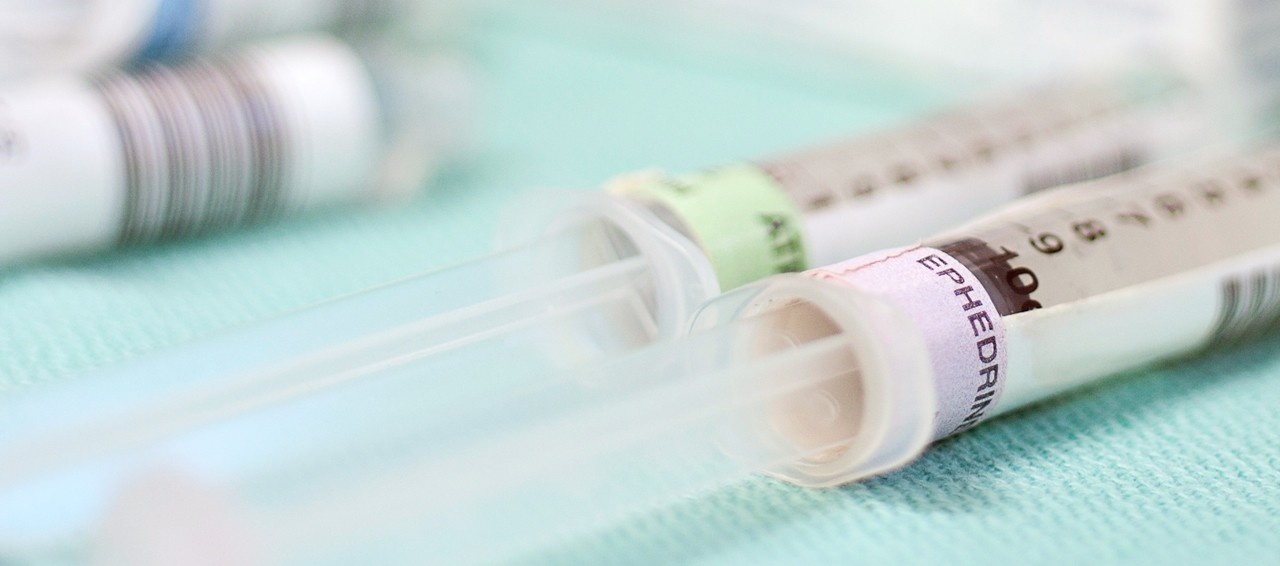Research
Working to advance diagnosis and therapy
Microcirculation represents the "battlefield" of pathophysiology in various conditions and diseases like:
- inflammatory disorders
- CNS injury-induced immunodeficiency disorder (CIDS)
- shock
- sepsis
To achieve further advances in diagnosis and therapy of these diseases, studies within microcirculatory models are necessary. We study the effects of different substances and their mode of action in distinct disease models in terms of changes in the microcirculation and in vitro reactivity of smooth muscles.
Current research projects
RESIST (Research on Endocannabinoid System in Inflammation, Sepsis and Trauma)
Cannabinoid-1 receptors (CB1R) exist primarily on central and peripheral neurons, where activation of these receptors is associated with regulation of neurotransmitter release.
Cannabinoid-2 receptors (CB2R) are found mainly on immune cells and in selected areas of the nervous system. Drugs targeting these receptors have been demonstrated to have anti-inflammatory actions.
Cannabinoid receptors, endocannabinoids and biosynthetic and degradative enzymes for these endogenous ligands form the endocannabinoid sytem. This important biological system is upregulated during sepsis, suggesting that drugs that modulate the endocannabinoid system may represent a therapeutic target in the treatment of local and systemic inflammation associated with sepsis.
However, to date, experimental studies involving CB1R and CB2R ligands in models of sepsis have been contradictory and it is unclear whether cannabinoids mediate pro- or anti- inflammatory actions, or what the contribution of individual cannabinoid receptor subtypes is in inflammation and sepsis.
The aim of our research in experimental sepsis is to investigate whether manipulation of the endocannabinoid system can protect the intestinal microcirculation, which plays a crucial role in the pathogenesis of sepsis and subsequent multiple organ failure.
Our hypothesis is that modulation of cannabinoid receptor activation in sepsis may protect the gut microcirculation by reducing microvascular damage and inflammation and maintaining microvascular perfusion.
Modulation of cannabinoid receptors represents a novel approach in sepsis therapy and will provide valuable information on the contribution of the endocannabinoid system to the regulation of microcirculatory physiology and pathophysiology and the utility of cannabinoid drugs in treating sepsis.
GECCO (German-Canadian Collaboration in Microcirculation Research)
GECCO-1: Inhibition of caspase-1
Rationale: TNF-alpha neutralizing agents are currently used clinically for the treatment of many inflammatory diseases such as:
- Crohn's disease
- rheumatoid arthritis
- ankylosing spondylitis
- juvenile rheumatoid arthritis
- psoriatic arthritis
- psoriasis
These protein preparations are expensive to manufacture and administer, need to be injected and can cause allergic reactions. An alternative approach to lowering the levels of TNF-alpha and IL-1beta in inflammatory disease is to inhibit the enzymes that generate these cytokines using cheaper small molecules.
Progress has been achieved for the cysteine protease Caspase-1 (Interleukin-1beta Converting Enzyme, ICE). Inhibitors of this enzyme are currently considered to be an excellent therapeutic target that has the potential to provide relatively inexpensive and orally bioavailable anti-inflammatory agents in the future. The effects of these substances in the microcirculation have to be proven in animal experiments.
GECCO-2: Therapeutic anticoagulation
Rationale: The link between anticoagulation and anti-inflammation is evident but not entirely elucidated. Therefore, it would be important to examine the effects of coagulation inhibitors on various mechanisms that are believed to be playing a role in inflammation with the scope to define the mechanisms responsible for their probable effectiveness and thereby open new therapeutic possibilities.
Critically ill patients have to be anticoagulated for several reasons, e.g., prophylaxis of thrombotic complications or anticoagulation for renal replacement therapy. Therefore, the use of anticoagulants may be useful not only in regard of the inhibition of coagulation but also as anti-inflammatory therapy with beneficial effects in the microcirculation.
GECCO-3: Anti-inflammatory effects of antibiotics
Rationale: Although the benefit of antibiotic therapy in infectious inflammatory diseases remains unquestioned, little is known about the effects that are unrelated to their antimicrobial property but which the antibiotics may exert upon the inflamed microcirculation.
In principal, it can be assumed that parallel to the antibacterial effect, an improvement of the disturbed microcirculation also occurs. However, the administration of antibiotics is intended to achieve bacteriolysis. The toxins released may, even if only temporarily, also lead to reinforcement of the alterations in the microcirculation.
In collaboration with the results of the microbial sensitivity test, a specific knowledge of the potential effects exerted by antibiotic substances upon the microcirculation could very well become a basic factor in the choice of medication to be used within the realm of antibiotic therapy for sepsis.
GECCO-4: TLR4-modulation
Rationale: Toll-like receptors (TLRs) play a pivotal role in the induction of innate immunity after the transactivation of proinflammatory cytokine genes. However, the responses of TLRs during severe polymicrobial sepsis have not been thoroughly examined.
Dehydroepiandrosterone (DHEA), a steroid hormone, is reported to have an immunomodulatory effect in sepsis. However, the mechanism responsible for its salutary effects is not known. TNF-alpha production and TLR4 mRNA expression in splenic macrophages are restored with DHEA administration. Furthermore, administration of DHEA delayed the mortality of septic animals.
The anti-inflammatory phase of sepsis induces a marked down-regulation of TLR expression in splenic macrophages; however, administration of DHEA results in the restoration of TLR2 and TLR4 mRNA expression. The effects of DHEA and other modulators of TLRs have to be evaluated in the inflammatory microcirculation.
Models
CLP / CASP (colon ascendens stent peritonitis)
- gram+/gram
- sepsis
- hemorrhagic shock
Intravital microscopy
- leukocyte / platelet / endothelial interactions
- functional capillary density
- plasma extravasation
- red blood cell velocity
In vitro myography
- smooth muscle relaxation / contraction
Laboratory investigations
- cytokines
- chemokines
- adhesion molecules
- enzymes
Animals
- specific pathogen free rats
- distinct knock-out mice strains
